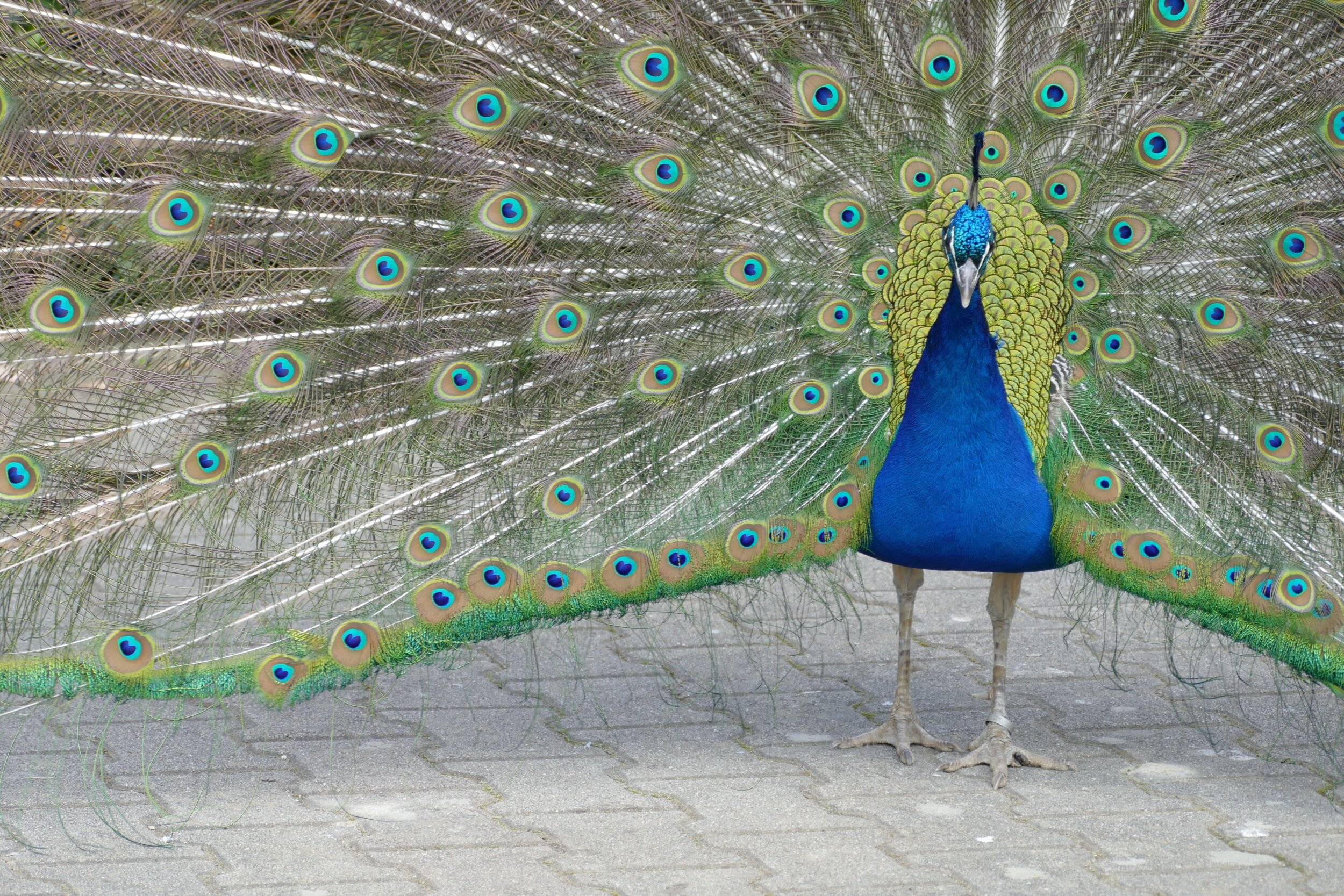The Symbology of Peacocks By Mary Jo Hazard, M.A., M.F.T, Author
The Symbology of Peacocks
By Mary Jo Hazard, M.A., M.F.T, Author
In Palos Verdes, the residents have shared their peninsula with flocks of flamboyant India Blue peacocks since the early 1920s. The peacocks were gifts from the Baldwin family to Frank Vanderlip to liven up his quiet estate. Over the years, the birds multiplied and spread out. Today they strut through the neighborhoods, dine on the vegetables and flowers, and roost in the trees. The school district proudly displays a peacock logo on its website.
The India Blue peacock is known all over the world for his colorful plumage, regal bearing, and proud stance. He's beautiful, ostentatious and loud. A royal crest adorns the majestic peacock's head, his long iridescent tail feathers shimmer in the light, and when he opens them up on display, his fan can reach six feet high. Very impressive to be sure, but did you know that this bird also has a centuries-long extensive history rich with symbolism?
Because of the bird's beauty and unique characteristics, artists have showcased him in their paintings since back in medieval times.
Artists used to put peacocks in their paintings to symbolize the immortality of Jesus Christ, and in early Christianity, they became the symbol of Christ's birth, as well as his death. It's not unusual to see a peacock along with the rest of the farm animals in paintings of nativity scenes.
On the other hand, some artists depicted the peacock's crest on the figures of Lucifer (Satan) as a symbol of excessive pride. They used the bird's crest to show the fallen angel's extreme pride—the reason he was thrown out of heaven.
The Catholic Church used the symbol of the peacock to represent resurrection, renewal, and immortality. Resurrection and renewal because the peacock sheds and regrows its long tail feathers every year; immortality because an ancient legend had it that the bird's flesh didn't decay. The eyespots on the peacocks' feathers were said to be another symbol—that of the all-seeing eye of God.
Different cultures and religions ascribed different characteristics to the peacock. Buddhists believed they symbolize wisdom, love, and beauty. For the ancient Babylonians, peacocks were a symbol of guardians.
In 1963, peacocks became India's national bird--a symbol of benevolence, knowledge, and compassion. The Hindus thought that the eyes on the peacock's feathers were God's eyes. They believed that their Hindu god, Indra, transformed himself into a peacock when he wanted to become an animal and that Kartikeya, their God of war, rode on a peacock.
People all over the world have recognized that there was something special about the peacock. In Japan, the peacock symbolizes goodwill, nurturing, kindness--an emblem of love.
In the United States, NBC is starting a new streaming service, Peacock, named after its longtime logo--a peacock with an eye-catching brightly colored fan.
And in Palos Verdes, CA, the peacocks continue to share their habitat and their beauty. Some people love them, some people loathe them, but everyone agrees that there's nothing more magnificent than a peacock on display.
Bio:
Mary Jo Hazard, M.A., M.F.T., is a retired psychotherapist, the author of three children's books, The Peacocks of Palos Verdes, P is For Palos Verdes, and Palo's World, and a coming-of-age novel, STILLWATER. Hazard writes a bi-weekly column, PV Neighbors, for the Peninsula News. She loves living on the Palos Verdes Peninsula and spending time with her husband and family. Her mission is to help remove the stigma of mental illness and help others live their lives to the fullest.








